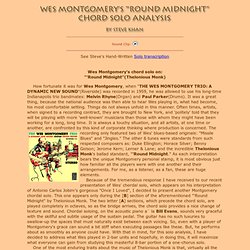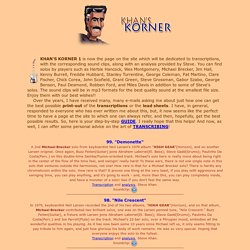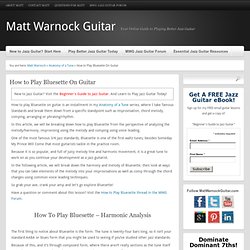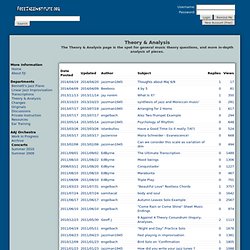Zoom
Trash

Wes Montgomery "'Round Midnight" Wes Montgomery's "'Round Midnight" Chord Solo Transcription & Analysis by Steve Khan. How fortunate it was for Wes Montgomery, when "THE WES MONTGOMERY TRIO: A DYNAMIC NEW SOUND"(Riverside) was recorded in 1959, he was allowed to use his long-time Indianapolis trio bandmates: Melvin Rhyne(Organ) and Paul Parker(Drums).

It was a great thing, because the national audience was then able to hear Wes playing in, what had become, his most comfortable setting. Things do not always unfold in this manner. Often times, artists, when signed to a recording contract, they are brought to New York, and 'politely' told that they will be playing with more 'well-known' musicians than those with whom they might have been working for a long, long time. It is always a touchy situation, and all artists, at one time or another, are confronted by this kind of corporate thinking where production is concerned. The recording only featured two of Wes' blues-based originals: "Missile Blues" and "Jingles.
" Khan's Korner 1 - Transcriptions by Steve Khan. KHAN'S KORNER 1 is now the page on the site which will be dedicated to transcriptions, with the corresponding sound clips, along with an analysis provided by Steve.

Khan's Korner 2 - Lead Sheets - Steve Khan. How to Play Bluesette - Anatomy of a Tune. How to play Bluesette on guitar is an installment in my Anatomy of a Tune series, where I take famous Standards and break them down from a specific standpoint such as improvisation, chord melody, comping, arranging or phrasing/rhythm.

In this article, we will be breaking down how to play Bluesette from the perspective of analyzing the melody/harmony, improvising using the melody and comping using voice leading. One of the most famous 3/4 jazz standards, Bluesette is one of the first waltz tunes, besides Someday My Prince Will Come that most guitarists tackle in the practice room. Because it is so popular, and full of juicy melody line and harmonic movement, it is a great tune to work on as you continue your development as a jazz guitarist.
In the following article, we will break down the harmony and melody of Bluesette, then look at ways that you can take elements of the melody into your improvisations as well as comp through the chord changes using common voice leading techniques. All.About.Jazz Tune Analysis Index. Chords Analysis and Guitar Examples. All the Things You Are is one the most commonly played jazz standards and is often one of the first tunes called at any jazz jam session.

Because of the tune's popularity many guitarists learn to play All The Things You Are at a fairly early stage in their development. What most guitarists fail to realize is that the piece actually has a fairly intricate harmonic structure that can pose quite a few problems for the novice improviser or comper. By understanding the relationship between each section of the tune, and the chords within those sections, we can develop a greater appreciation for the overall formation of the harmony, which will allow us to better navigate the changes in both a solo and chordal fashion.
ATTYA Key Center Breakdown All the Things You Are can be divided into four sections, with the first two being sub-sections of one larger section: A Section The first section of the tune contains bars 1 to 8 and is labeled A. Music Theory & Analysis. Thoughts about Maj 6/9 (no preview text) This post contains the following attachment types: -audio/mp3 4 by 5 -image/tiff What Is It?

Synthesis of jazz and Moroccan music' -application/pdf Arranging for 2 Horns -image/bmp Alez Two-Trumpet Example Psychology of Rhythm Triplet feel in English - Satchmo -audio/mp3 Have a Good Time (is it really 7/4?) I have been trying to play this number. Does anyone have any thoughts on this, and is the chorus really 4/4? Maria Schneider - Evanescence! Hey fellas, I just wanted to know how to analyse a jazz piece. I'm trying to do an analysis of Maria Schneider's 'Evanescence' piece (beautiful). There is the link.
Jazz Standards, Jazz History, Musicology, Biographies and Books.